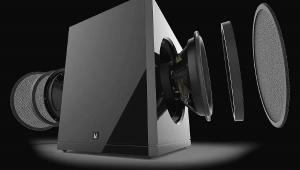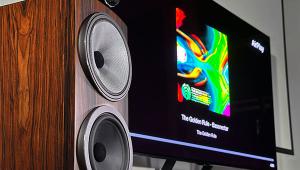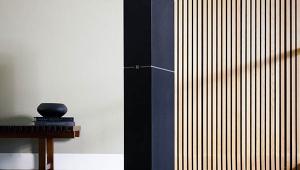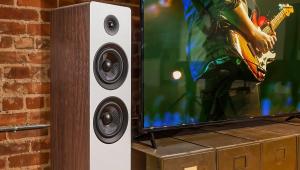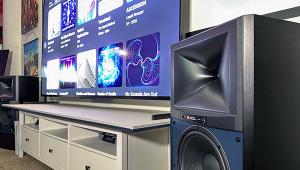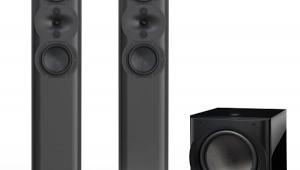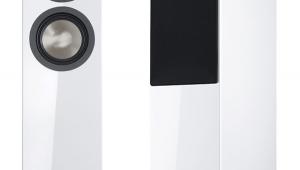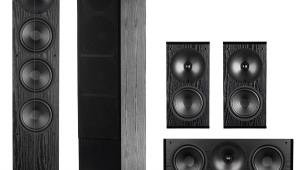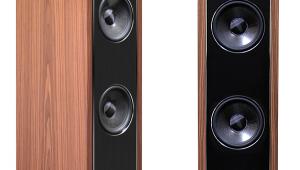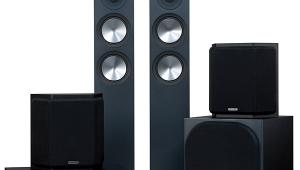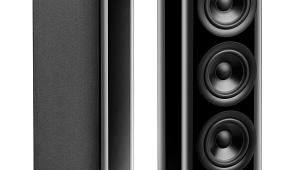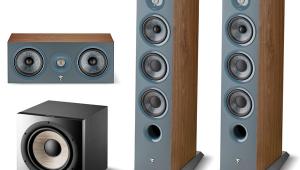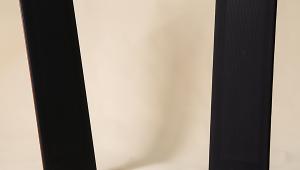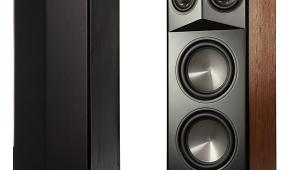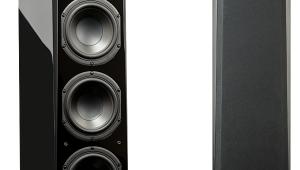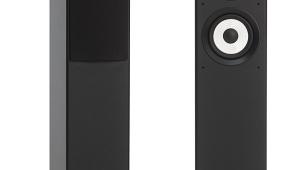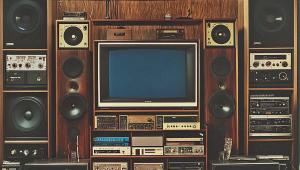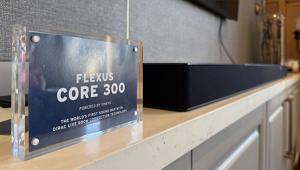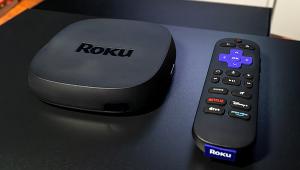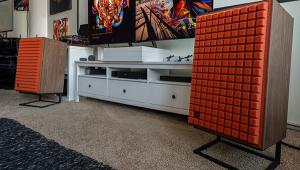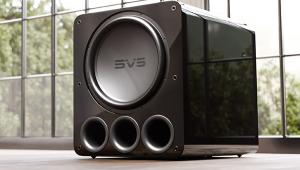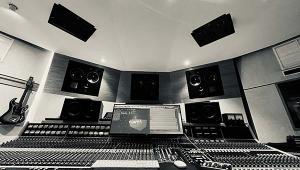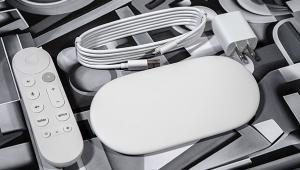PSB Synchrony One Speaker System Setup
I set up the Synchrony speakers in the same locations I use for other speakers in my 15.5' x 26' x 8' room. The left and right fronts were each about a foot beyond the outer edges of my 78-inch-wide Stewart Studiotek 130 projection screen, toed in so their axes crossed just in front of the center listening position. The right speaker was just under three feet from the right side wall, the left speaker about four feet from the left. The center speaker was below the screen, tilted slightly upward, and the surrounds were in the back of the room, wired in the bipolar configuration. The subwoofer was positioned just slightly out from the right-front corner, with one of its drivers facing into the corner and the other away from it.
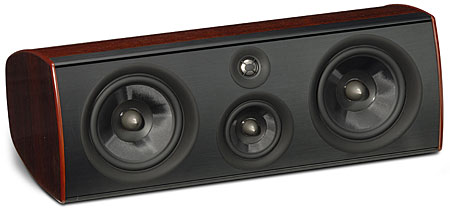
The speakers were single-wired, not bi-wired. I did not use the included spikes because of the solid oak floor beneath the room's carpet.
PSB also provides one plug with each Synchrony One that you can use to block one of the ports in order to fine-tune the bass to your room. Since each of the three woofers is separately ported, plugging each one produces a slightly different bass and midbass response. Whether or not you feel the need to plug the ports, and which port proves optimum, depends on the room and speaker placement.
My initial experience with the Synchrony system was less than jaw-dropping. I came to them immediately after reviewing the much less-expensive B&W 683 system. The high-value B&Ws produce an exciting sound—clean through the midrange, a little forward but not in an off-putting way, and with a sparkle on top that opened up both soundtracks and music without being over-the-top.
On the other hand, the more-expensive Synchronies were a little polite on top, with a clean midrange that was slightly obscured by a warm-sounding midbass. Apart from that last point, nothing about their sound was really wrong, but they didn't quite scratch my itch for great home-theater and music sound.
Next, of course, came the usual tweaking. The range of adjustments in a home-theater setup, in which the speakers must support the onscreen action, is more limited than in a 2-channel music system. Fortunately, I had three degrees of freedom: the grilles, toe-in, and plugging one or more of the three ports.
I always start this sort of fine-tuning with a 2-channel configuration, usually with the subwoofer engaged. There's just too much going on with surround sound—movie soundtracks in particular—to bring a 5.1-channel system into the mix at first. Once the left and right fronts are optimized, the rest of the system usually falls easily into place.
To make a long story short, I ended up plugging the top ports and removing the grilles. The port plugs leaned out the too-full midbass, which not only added greater clarity to the bottom end but also opened up the midrange. Removing the grilles added a welcome degree of sparkle to the top.
- Log in or register to post comments
